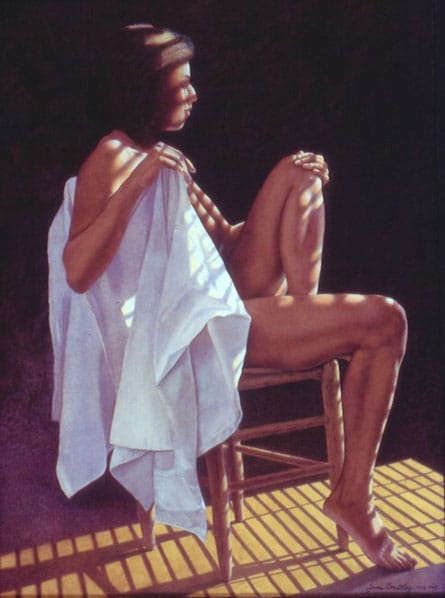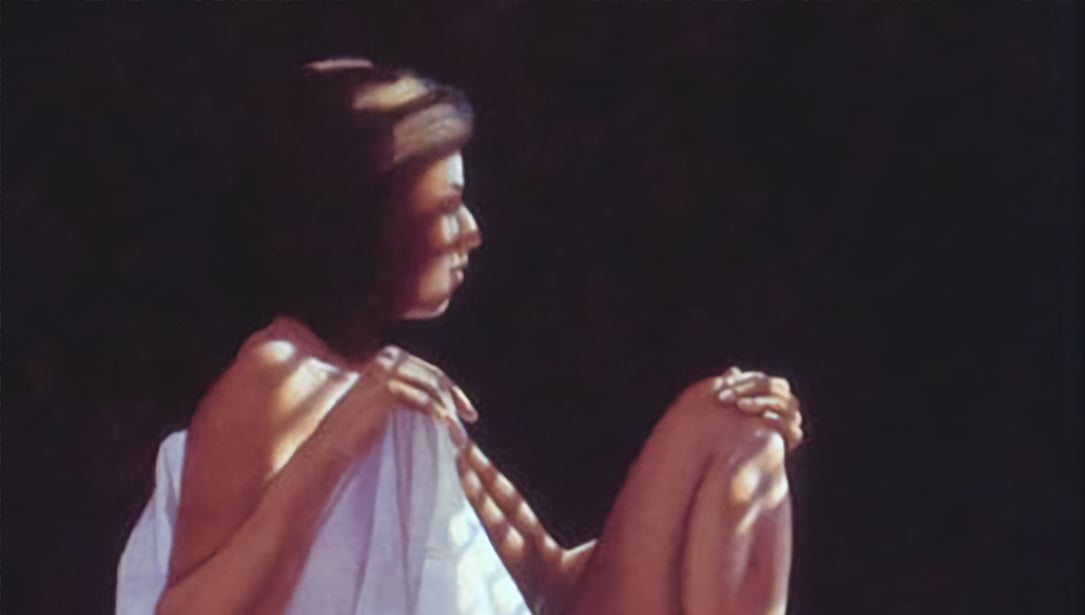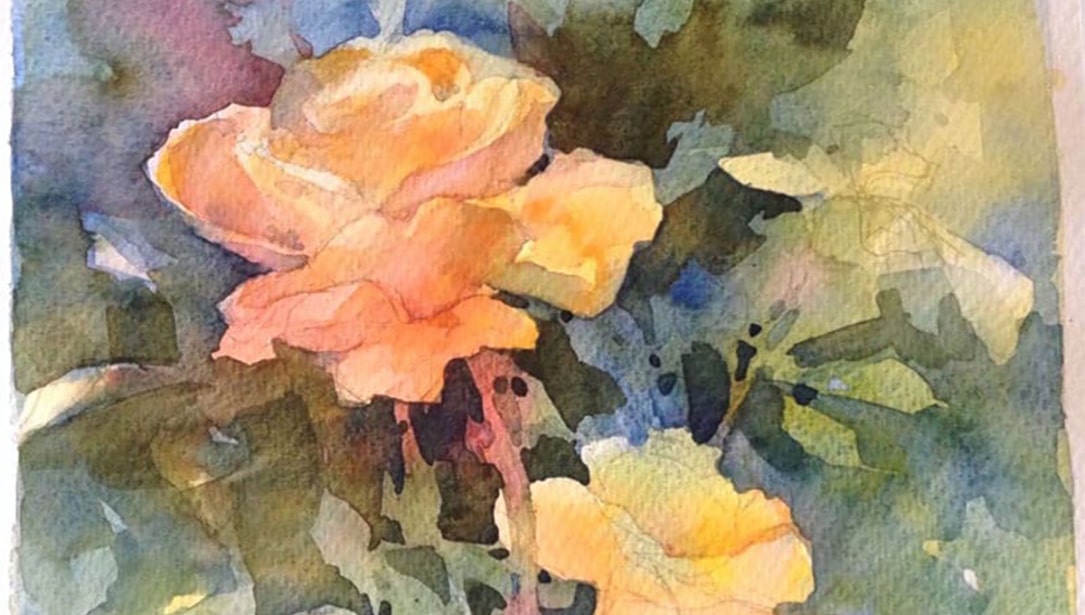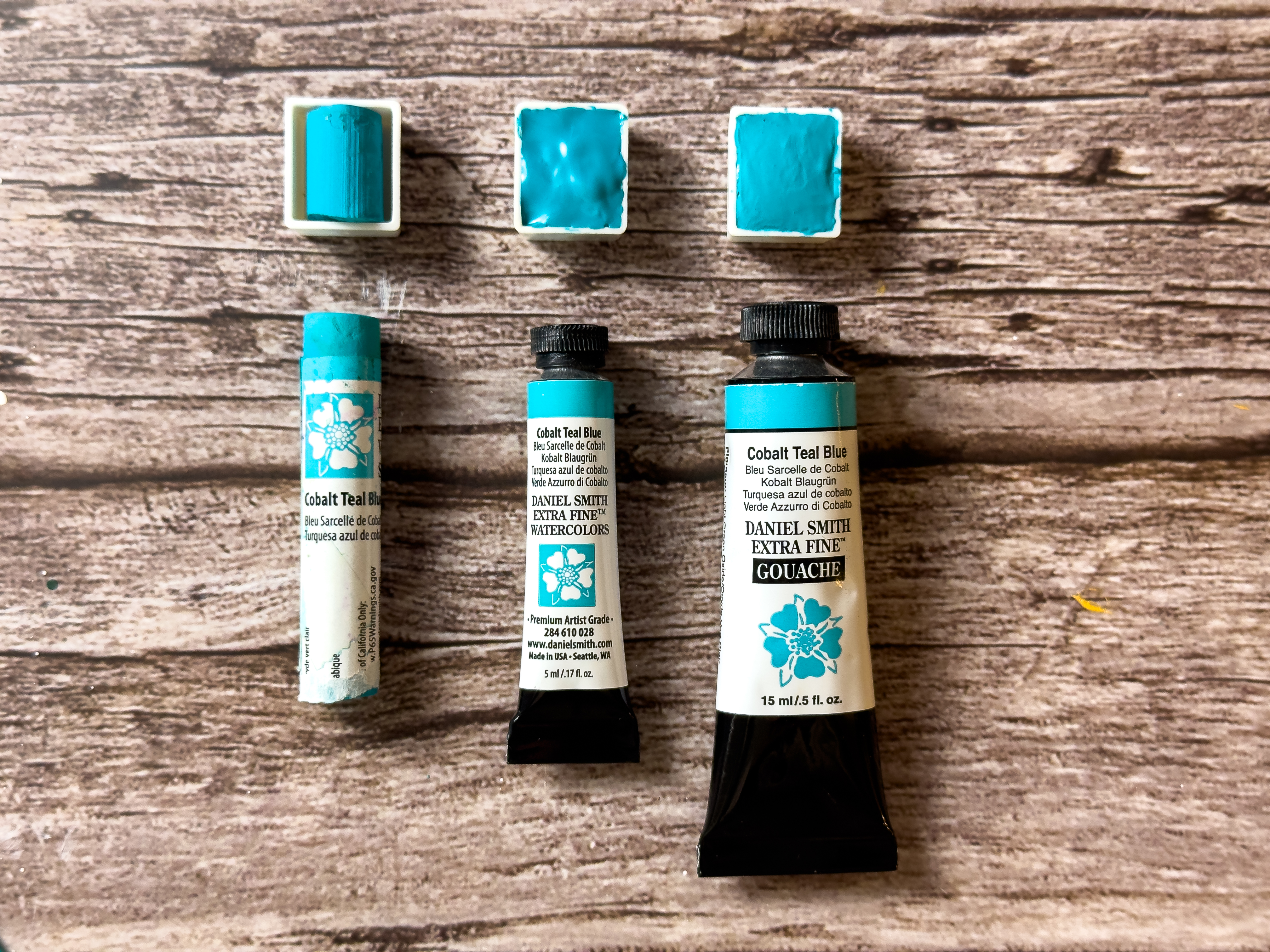Most of the watercolor paintings of people that I have seen are very loosely painted. That’s not necessarily bad, any more than paintings that look like photographs are necessarily good. I prefer to make paintings that look like real people, but not like photographs. Photographs capture minute details that may or may not add anything of value to a work of art. So my approach is to emphasize details that are important, and to ignore details that are irrelevant. In addition to taking liberties with details, I also freely take liberty with colors. This painting, Delta Dawn, was actually painted in a brightly lit room with a tiled floor. All the colors in the floor and the darkness in the background are just made up.
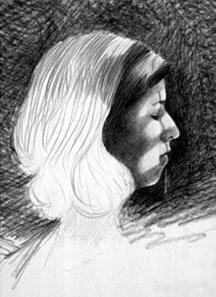
My model sat in a chair by an open window where direct sunlight streams in most of the day. Since the pattern of light changes constantly, it was necessary to make numerous preliminary drawings to establish exactly where the light would fall in the painting. If I needed a light area or a shadow area in a particular place, I just put it there, in spite of where it may have actually occurred. This is okay as long as it still looks believable. It is important to remember that a painting such as this one isn’t accidental. Lots of planning and drawing goes into the design. I actually toyed with this design for several years, making several false starts in paint before finally completing this one. You will see that I continued this process even after I started to paint. In the early stages of this piece, I had part of the Venetian blinds showing. In the end, I decided that they shouldn’t be there and removed them.
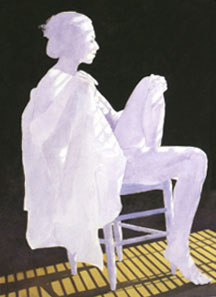
After making a light pencil sketch on my paper, I painted the dark background first, using several washes of Burnt Umber, Ultramarine Blue and Black. Black is only used as a small ingredient, never by itself. My brushes, by the way, are always Kolinsky sable, either round or flat. Then I painted the light and shadows on the floor. The shadows are the same mixtures as the background. The light areas are thin washes of Cadmium Yellow Medium with a small amount of purple (Ultramarine Blue blended with Quinacridone Magenta). Only use a small amount of purple to reduce the intensity of the yellow a little. This is followed by washes of Raw Sienna. After applying a wash of purple in the shadow areas of the body, I am ready to begin painting in the flesh colors.
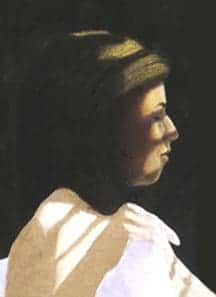
I have a very simple formula for painting skin. I use purple underpainting in the shadows, followed by many layers of Burnt Sienna, Raw Umber, Burnt Umber, Cadmium Orange, Cadmium Yellow Medium, and Cadmium Red Medium. I know that this may not sound simple, but it really is. I use wet-over washes where possible, and dry-brush where needed for detail and texture.
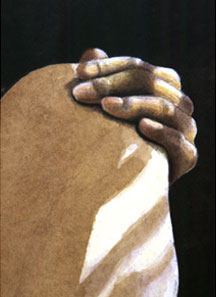
In the next image, you can see how I develop an area with light washes over purple underpainting, followed by drybrush.
The completed painting is a continuation of these steps until everything is done. Most of the shadows in the shirt are done with purple. I like the way it looks next to the yellow. In my opinion, a successful painting needs strong contrasts. This can be yellow versus purple, dark versus light, or smooth versus textured. Most great paintings have fairly simple designs and controlled contrasts.
It’s also important to be aware that when painting a nude, it can easily venture into the realm of being so sexually oriented that it becomes cheapened. The last thing that a serious artist wants to do is to paint a picture that looks as if it came from the pages of a men’s magazine. My advice is to look at the work of the great masters. Look at the work of Michelangelo, Rembrandt, Rubens, and David. There are no better teachers.
